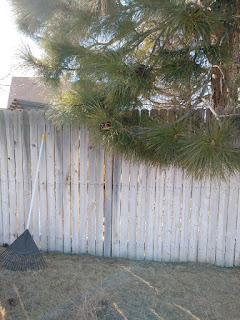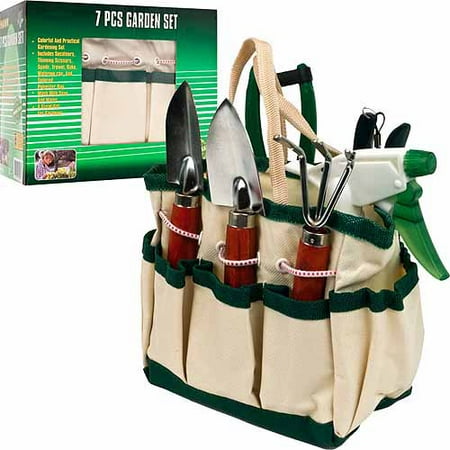I braved the wind yesterday to get started on my lawn-raking. I like to begin with the outside (of the fence) east side of the yard, underneath my son's cub scout Scotch Pine sappling, which, by the way, is no longer a sappling, as shown in this picture. This is what a 30-year old Scotch Pine looks like (see below). I might prune the branches (or ask my son to prune the branches) this Spring, but I haven't yet because I like the way they drape aver the fence a little bit. It makes the yard seem like more of a mountain setting, than a semi-arid desert scene, which our local climate is said to be.
 |
| 30-ft Scotch Pine - (edited for privacy). |
This was actually the forth raking I have done to this area since last fall. The first three rakings garnered about a 39-gallon bag of pine needles and pine cones each time. I haven't really raked, though, since just before Christmas of 2017, when I tidied up before stringing a few Christmas lights on the corner of the yard. Just this section of the yard, which measures about 8 feet by 30 feet, yielded another 39-gallon bag full of dead grass, pine needles and pine cones, yesterday.
 |
| Dead, fallen pine needles & loose grass thatch |
It would really be a waste to try to apply the ferilizer/crab-grass deterrent on top of all of that thatch. I like to leave a little bit of thatch so I don't have to water so often during the hot summer months of July and August, but not that much! The night time temperatures here are still in the teens, so it still isn't quite time to turn on the sprinklers to bring the lawn out of dormancy. I'm hoping that we get a good spring snowstorm, and then I want to apply it just before the storm. The grass just loves that, and greens up about a week later, with very few weeds.
I spotted a few old dormant crabgrass spots today, in the front yard, where I usually have the most trouble with crabgrass. I'll take my weed digger tool with me tomorrow, when I go out to rake another section of the yard, and dig them up. It's good to pull as many crabgrass patches as possible. This picture shows what a dormant crabgrass patch looks like.
 |
| Dormant crabgrass patch. Crabgrass seedling (You can see why they are so insidious. I believe there are little seeds in each "notch," and they "roll" everywhere, or "fly" if there's a good wind.) |
I managed to dig up the crabgrass patches with my Fisker digger/weeder. It really works well, because it's curved, so that I can brace it against the ground when I try to dig-pull the crabgrass up out of the ground.
It looks like the crabgrass roots were never even dormant, so I know I should have applied the crabgrass deterrent on the first of February. I actually tried to buy fertilizer/crabgrass deterrent at the Walmart Garden Center then, but it wasn't on the store shelves yet (as mentioned in an earlier posting).
_________________________________________







No comments:
Post a Comment